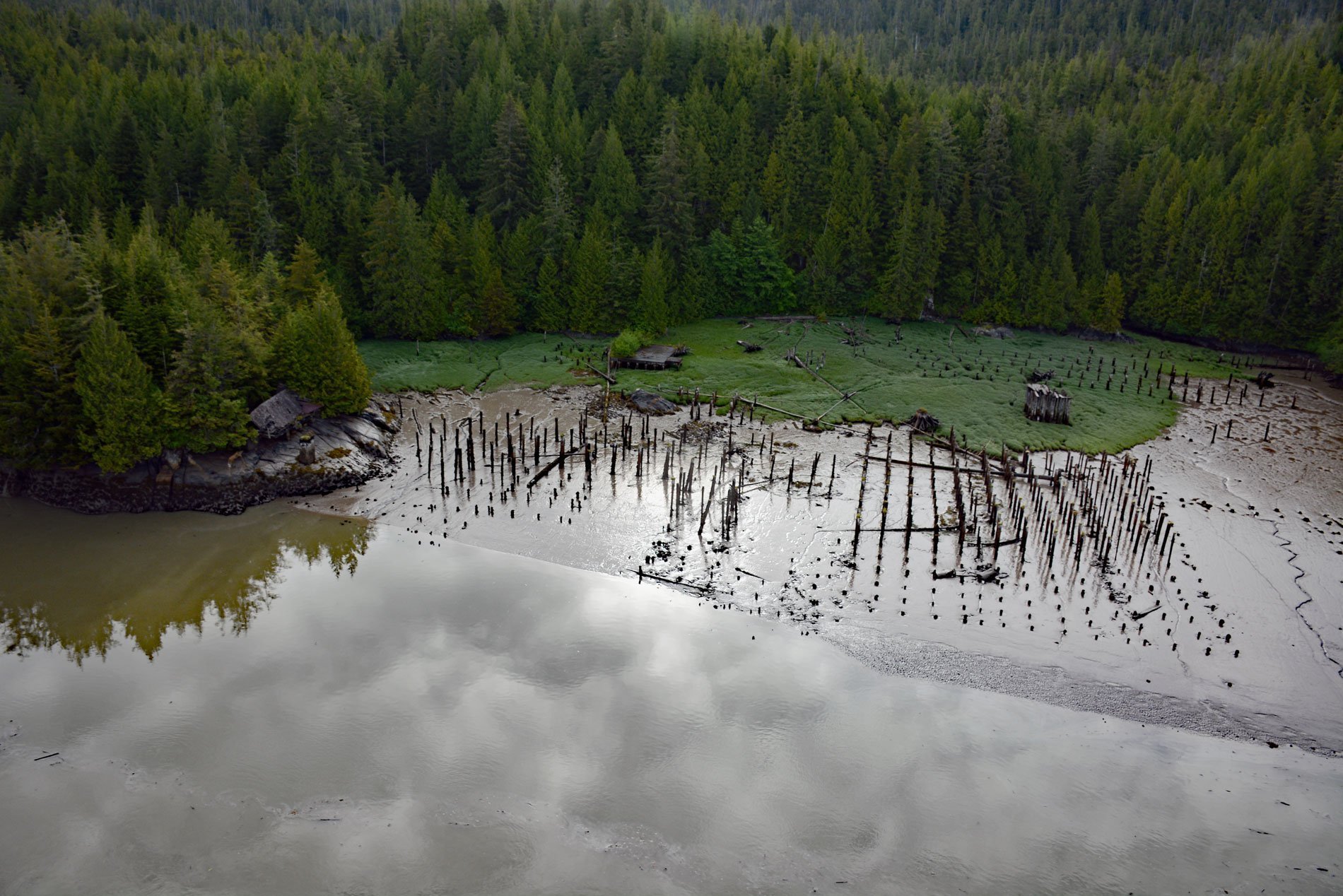Carlisle is a historical remote salmon cannery on the east bank at the mouth of the Skeena River, about 66 miles (106 km) southwest of Terrace and 17 miles (27 km) southeast of Prince Rupert, British Columbia. Carlisle was built in 1895, as one of the first canneries outside of the protected waters of the Skeena River, and it was operated until 1950. At the peak of annual production in 1941, the facility yielded 72,000 cases of canned salmon with 48 one-pound cans per case. The cannery at Carlisle was a massive industrial complex and relied on a seasonal workforce. Unlike other salmon canneries that were built in existing communities, Carlisle was also the home for the workers and became a seasonal village of people representing diverse ethnic groups, segregated but living in close quarters. The cannery relied upon the skills and fishing rights of the Tsimshian, the experience of Chinese cannery workers, and company investors who were usually in faraway cities.
Chinese workers formed the major labor force in the salmon canneries although each cannery also employed Europeans, Native people, and Japanese workers. The Europeans were administrators, clerks, mechanics, engineers, and fishermen. The Native men went out to fish in the rivers or in the open sea while the Native women made and mended nets and then worked with the Chinese workers in the canning plant. The Japanese carried out maintenance work on the wharves as well as in the cannery plant. A great majority of the Chinese and the Native people were seasonal workers who went to canneries at the beginning of the annual salmon run. In the canning plant, a group of Chinese workers cut off the heads and fins of the fish, slit open their bellies, removed the guts, and sliced the large fish into halves lengthwise. Some of these Chinese workers could butcher about 2,000 fish in a 10-hour day. These butchered fish were then pushed to the opposite side of the bench where Native women would scrub off the scales, carry out final trimming, and wash the fish with water. The remnants such as guts, fins, and scales were thrown back into the sea through a large hole in the bench and were washed away by the rising tides. In 1905, Edmund A. Smith designed a revolutionary machine to clean and butcher salmon called the Smith Butcher Machine which became commonly known by the racist name ‘Iron Chink’ reflecting the anti-immigrant sentiment of the time.
The cannery was operated by Kildala Packing Company until 1925 when it was purchased by the Canadian Fishing Company. The Canadian Fishing Company Limited was incorporated in British Columbia in 1908. It grew out of operations of the New England Fish Company‘s halibut operations on the British Columbia Coast. The New England Fish Company was organized in 1868 by fish dealers doing business in Boston so they could supply themselves with halibut from the Atlantic Banks. To satisfy increased demand the company began fishing for halibut on the west coast in 1893. In 1905, five Vancouver men organized an association, a predecessor to the Canadian Fishing Company, to produce halibut for the New England Fishing Company and other distributors. In 1923, the company purchased the freezing and cold storage plant at Butedale. In 1925, the company purchased three plants owned by Kildala Packing Company at Rivers Inlet, Manitou Cannery on Deans Channel, and Carlisle Cannery on the Skeena River. Today, the Canadian Fishing Company is known as Canfisco which includes associate companies in California, Oregon, Washington, and Alaska. Canfisco is owned by the Jim Pattison Group, the third-largest privately held company in Canada, with operations in a wide range of business areas including automotive, food, media, packaging, entertainment, periodical distribution, export, and financial services. Read more here and here. Explore more of Carlisle here:

